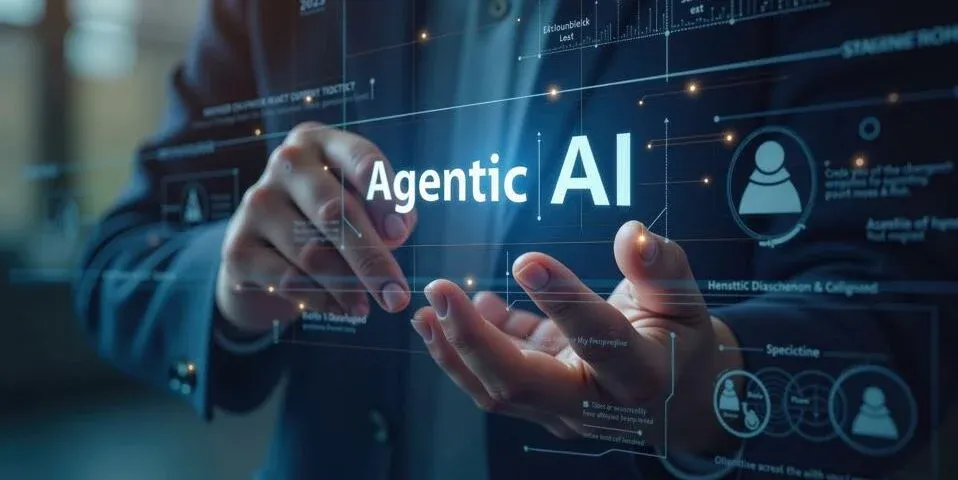Agentic AI Will Upend IT Services: What Survives and What Fails

Agentic AI is moving from hype to operating reality. Analyst data shows IT spending will keep growing, but value capture is shifting toward AI-native delivery. Providers that keep selling labor for repeatable work will see margin compression. Those that re-architect around autonomous agents will win. canalys.com
Executive Summary
- IT spending is forecast to grow about seven percent year-over-year, with partner-delivered IT still the dominant route to market. The next wave of growth is tied to operationalizing agentic AI in SaaS and services. canalys.com
- Canalys flags 2025 as the year partners must prove AI ROI, not just pilots. Firms that cannot align services to AI-enhanced business outcomes risk being sidelined. canalys.com
- Early movers are formalizing an agent operating layer to coordinate many agents across systems. PwC
- Large IT service providers are openly planning for human plus AI workforces with pools of agents embedded in delivery. The Economic Times
- Security and governance are not optional. Agentic systems introduce new attack surfaces that require explicit risk controls. Unit 42
Also See: AI Agents for Beginners
What Agentic AI Actually Changes
Agentic AI combines planning, memory, tool use, and autonomous execution. It pushes beyond passive copilots to proactive teammates that monitor signals, trigger workflows, and close loops without constant prompts. The practical effect: entire task chains that once required teams can run as continuous flows. McKinsey & Company
For buyers, the question stops being “can AI assist” and becomes “which processes should be agent-run end to end.” For suppliers, the business model shifts from billable hours to outcome-priced, agent-first services.
Why This Is Existential for Legacy Providers
Canalys warns the partner landscape is changing fast. Growth persists, but buyers expect AI-native value tied to measurable ROI in their line-of-business tools. Partners who cannot quantify and govern agent outcomes will lose influence in the buying process.
At the top end, leaders are institutionalizing agents. PwC’s Agent OS formalizes orchestration, governance, role-based access, and audit across multi-vendor agents. That is not a side project. It is the new control plane. PwC
Meanwhile, tier-one providers are openly planning a large pool of agents to work alongside people in delivery. That signals a permanent shift in how IT work is executed. The Economic Times
Where Margins Move
- Run-cost automation
Ticket triage, incident response, cloud cost tuning, and data backfills move from manual queues to autonomous loops. Providers capture value through uptime, latency, and cost KPIs rather than hours. - AI-enhanced SaaS operations
As SaaS vendors embed agent capabilities, partners win by integrating and governing those agents across departments. Canalys expects this to drive the next phase of partner growth. - Agent orchestration and governance
The scarce skill becomes designing agent teams, policies, approvals, and observability. That is a premium service, not a commodity. PwC
Risk: The Blind Spot That Breaks ROI
Agentic systems change the threat model. New risks include tool-chain abuse, instruction hijacking, memory poisoning, and unauthorized actions from poorly scoped permissions. Security teams need patterns for guardrails, human-in-the-loop approvals, and full execution logs. Unit 42
Treat agents like production software with identity, secrets management, sandboxing, and kill-switches. Anything less will fail audits and stall adoption.
A Practical 90-Day Plan
Days 0 to 15
- Pick two high-leverage workflows with clear KPIs: incident triage and cloud optimization are common wins.
- Define decision boundaries, rollback rules, and approval steps.
- Stand up an orchestration layer with execution logging and RBAC. PwC
Days 16 to 45
- Wire agents to your systems of record and ticketing. Start read-only.
- Run shadow mode. Compare agent actions to human baselines weekly.
- Close gaps in data quality and access scopes. McKinsey & Company
Days 46 to 90
- Switch on write actions behind approval gates.
- Publish an oversight dashboard for business owners and security.
- Convert savings into a pricing narrative for clients: fixed-fee or gain-share, not time and materials.
How Scalevise Can Help
If you want help designing agent-first delivery with measurable ROI, we can implement the operating guardrails and workflows, then scale it inside your stack.
- Learn how we build workflow automation that actually ships.
- See where AI sales agents create pipeline leverage.
- Explore case studies for real integration patterns.
- Ready to evaluate your first two agent use cases
Contact Scalevise
Bottom Line
This is not about adding a chatbot. It is a complete operating model rewrite.
At Scalevise, we help organizations rebuild their IT infrastructure with agentic AI at the core from workflow automation to governance, orchestration, and security. Buyers will reward providers that deliver governed, autonomous outcomes with transparent ROI.
If you want to future-proof your IT operations and avoid being outpaced by autonomous systems that never sleep and never wait for a meeting, contact Scalevise today. Let’s design your AI-native infrastructure together.
